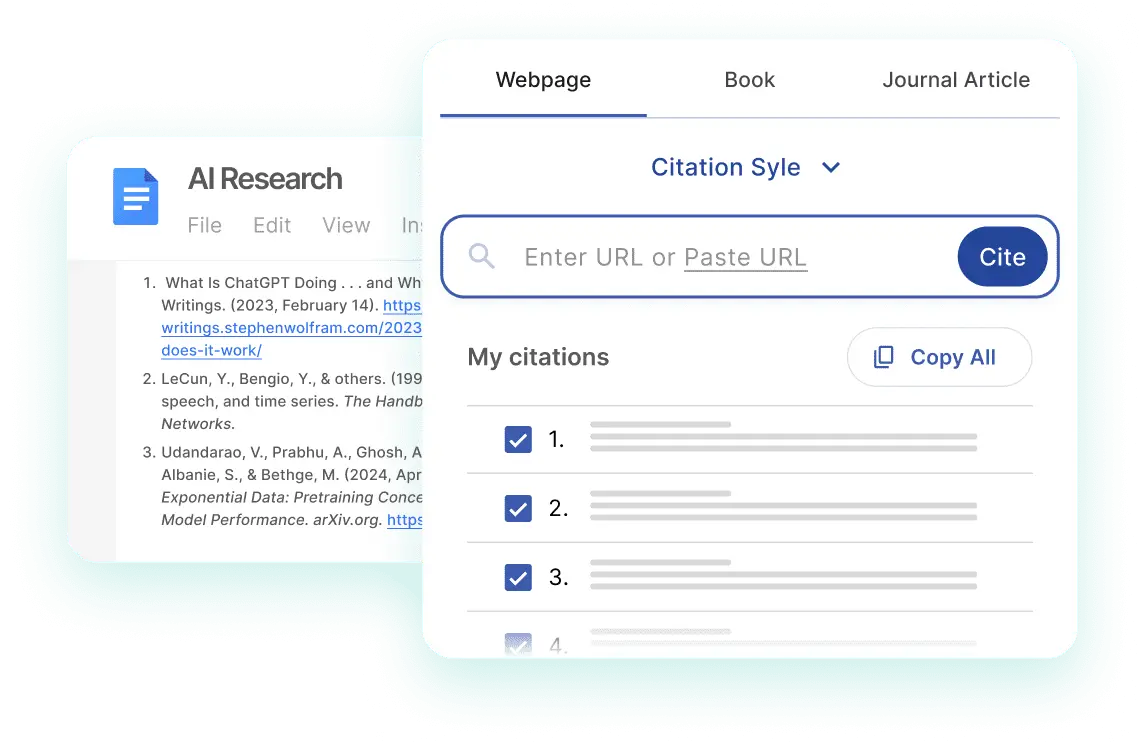Mastering Literature Review Steps
Understand the crucial stages and best practices for conducting a comprehensive literature review with ease and precision.
Try Justdone
Justdone.ai Benefits for You
Time-Saving Data Synthesis
Effortlessly synthesize vast amounts of data into meaningful insights, saving time and effort in the review process.
Reliable Source Evaluation
Ensure the credibility and relevance of sources with a reliable evaluation process, enhancing the quality of your literature review.
Comprehensive Topic Analysis
Conduct a thorough and comprehensive analysis of your research topic, ensuring a comprehensive literature review.
Benefits of Literature Review Step
Comprehensive Analysis
A literature review step allows for a comprehensive analysis of existing research and knowledge in a particular area. By conducting a literature review, researchers can identify gaps in the current knowledge, thereby contributing to the body of knowledge in their field.
Moreover, it provides a solid foundation for a research study by ensuring that the proposed research is unique and adds value to the existing literature. This step is crucial for establishing the relevance and significance of the chosen topic or research question.
Try Justdone ->
Critical Evaluation
Another benefit of the literature review step is the opportunity it provides for critical evaluation. Researchers can assess the strengths and weaknesses of previous studies, methodologies, and findings, which is essential for designing a robust research methodology.
By critically evaluating existing literature, researchers can identify contradictory findings, methodological limitations, and areas that require further investigation, thereby enhancing the rigor and credibility of their own research.
Try Justdone ->
Theoretical Framework Development
Additionally, conducting a literature review step aids in the development of a theoretical framework for the research. By synthesizing existing theories and concepts, researchers can construct a solid theoretical foundation for their study, guiding the formulation of hypotheses and research questions.
This process enables researchers to situate their study within the broader theoretical context, demonstrating a clear understanding of the existing knowledge and theoretical underpinnings relevant to their research topic.
Try Justdone ->
Essential Tips for Literature Review Step
Thorough Search Strategy
When embarking on the literature review step, it's crucial to develop a thorough search strategy to ensure comprehensive coverage of relevant literature. Utilize multiple databases, keywords, and search terms to identify pertinent scholarly sources.
Furthermore, consider both published and unpublished works, including conference proceedings and dissertations, to encompass diverse perspectives and insights related to the research topic.
Critical Synthesis
Engage in critical synthesis by analyzing and synthesizing the findings, methodologies, and theoretical frameworks from the selected literature. Avoid mere summarization and instead focus on identifying key themes, controversies, and gaps in the existing knowledge.
By critically synthesizing the literature, researchers can construct a coherent narrative that highlights the evolution of ideas, conflicting viewpoints, and emerging trends within the research area.
Rigorous Evaluation
Ensure rigorous evaluation of the quality and relevance of the literature included in the review. Utilize established appraisal tools to assess the methodological rigor, credibility, and applicability of the selected studies, thereby enhancing the overall quality and trustworthiness of the literature review.
Additionally, consider the currency of the literature, relevance to the research context, and the significance of each source in contributing to the understanding of the research problem.
Conceptual Mapping
Utilize conceptual mapping techniques to visually represent the interrelationships among the reviewed literature. Conceptual mapping aids in identifying connections, patterns, and conceptual frameworks present in the literature, thereby facilitating the organization and synthesis of complex information.
By visually mapping the conceptual landscape, researchers can gain insights into the structure of knowledge in their research area, leading to a more coherent and insightful literature review.
Citation Management
Implement an efficient citation management system to organize and track the sources included in the literature review. Utilize citation management software to create a centralized database of references, manage citations, and generate bibliographies, ensuring accuracy and consistency in citing sources.
By maintaining a systematic citation management approach, researchers can streamline the process of referencing and citing the relevant literature in their research work.
Exploring Literature Review Examples
Discovering the Art of Crafting a Comprehensive Literature Review
Craft a literature review example that effectively addresses the research question related to 'impact of technology on educational outcomes.'
In the literature review example addressing the impact of technology on educational outcomes, it is imperative to begin by identifying the key themes and variables associated with technology integration in educational settings. The review should encompass studies focusing on the influence of technology on student learning, engagement, and academic achievement.
Furthermore, the literature review should critically examine the methodologies employed in the selected studies, emphasizing the strengths and limitations of the research designs, data collection methods, and analytical approaches. It should also analyze the theoretical frameworks underpinning the studies to assess the conceptual foundations guiding the investigation of technology's impact on educational outcomes.
Moreover, the review should synthesize the findings from diverse sources, highlighting the evolving perspectives on technology's effects on educational attainment, cognitive development, and pedagogical practices. Emphasis should be placed on identifying conflicting viewpoints, gaps in the literature, and emerging trends in technology-mediated learning environments.
Additionally, the literature review should incorporate recent publications to ensure currency and relevance to the contemporary educational landscape. It should address the implications of technological advancements, such as online learning platforms, adaptive technologies, and digital resources, on educational practices, equity, and accessibility.
The conceptual mapping of the literature should visually illustrate the interconnectedness of the reviewed studies, presenting a comprehensive overview of the theoretical models, empirical evidence, and conceptual frameworks shaping the discourse on technology's impact on educational outcomes. Through conceptual mapping, the review can elucidate the complex relationships and interdependencies among the identified themes and findings, contributing to a holistic understanding of the research area.
Finally, the literature review example should demonstrate meticulous citation management, ensuring accurate referencing of the included sources and adherence to citation style guidelines. By employing an efficient citation management system, the example can exemplify the proper attribution of ideas, data, and insights derived from the reviewed literature.
Craft a literature review example that effectively examines the influence of social media on consumer behavior and decision-making.
In crafting a literature review example exploring the influence of social media on consumer behavior and decision-making, it is essential to encompass a diverse range of perspectives and empirical evidence related to the impact of social media platforms on consumer choices, preferences, and purchasing behaviors.
The review should critically analyze the methodologies employed in the selected studies, emphasizing the strengths and limitations of the research designs, sampling techniques, and data analysis methods. It should also assess the theoretical frameworks guiding the investigation of social media's influence on consumer decision-making, highlighting the conceptual underpinnings of the reviewed studies.
Moreover, the literature review should synthesize the findings from various sources, elucidating the evolving trends, patterns, and discrepancies in consumer behavior influenced by social media interactions, advertisements, and user-generated content. Emphasis should be placed on identifying the impact of social media marketing strategies, influencer endorsements, and online reviews on consumer perceptions and purchasing decisions.
Additionally, the review should incorporate recent publications to capture the dynamic nature of social media platforms and their evolving role in shaping consumer behaviors across different demographic segments and market contexts. It should address the implications of social media engagement on brand loyalty, consumer trust, and the formation of online communities.
Conceptual mapping of the literature should visually illustrate the interconnectedness of the reviewed studies, presenting a comprehensive overview of the theoretical models, empirical evidence, and conceptual frameworks shaping the discourse on social media's influence on consumer behavior. Through conceptual mapping, the review can elucidate the complex relationships and interdependencies among the identified themes and findings, contributing to a nuanced understanding of the topic.
Finally, the literature review example should exemplify meticulous citation management, ensuring accurate referencing of the included sources and adherence to citation style guidelines. By employing an efficient citation management system, the example can demonstrate the systematic organization of references and the ethical attribution of intellectual contributions from the reviewed literature.